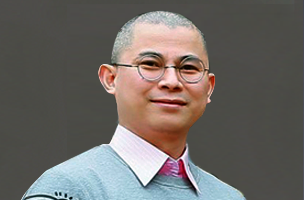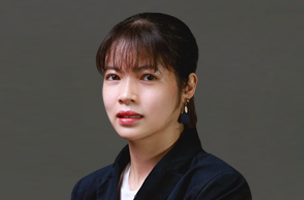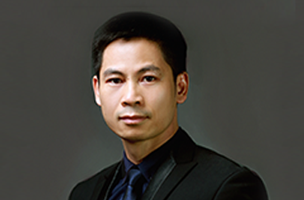Legal Practice in MYANMAR
Bud & Prairie are profusely expert and experienced to advise and assist you with other legal matters.
- Legal System
- Common Law Influence: Myanmar’s legal system is based on the common law system introduced during British colonial rule. This means that case law, legal precedents, and statutes play a significant role in the practice of law.
- Sources of Law: The primary sources of law in Myanmar include:
- Constitution: The Constitution of Myanmar (2008) is the supreme law of the land and lays the foundation for the country’s legal framework.
- Statutes and Legislation: Various laws enacted by the legislature form the statutory legal framework.
- Case Law: Judicial decisions and interpretations of laws by courts also contribute to the legal landscape.
- Customary Law: In certain areas, customary laws, particularly those related to personal status, inheritance, and family matters, are still recognized and practiced, especially among different ethnic groups.
- Legal Professionals
- Lawyers (Advocates and Pleaders): Legal practitioners in Myanmar are generally categorized into advocates and pleaders:
- Advocates: These are senior legal practitioners who can appear before all courts in Myanmar, including the Supreme Court. Advocates are typically more experienced and may specialize in certain areas of law.
- Pleaders: These are legal practitioners who can represent clients in lower courts, such as district and township courts. They may handle a wide range of legal matters but typically have fewer years of experience compared to advocates.
- Judges: The judiciary in Myanmar consists of judges who preside over various courts, from township courts to the Supreme Court. Judges are appointed by the government and are responsible for interpreting and applying the law.
- Public Prosecutors: Public prosecutors represent the state in criminal cases. They are responsible for bringing charges against accused individuals and ensuring that justice is served in accordance with the law.
- Court System
- Supreme Court of the Union: The highest judicial authority in Myanmar, the Supreme Court has jurisdiction over all civil and criminal matters. It also has the power to interpret the Constitution.
- High Courts of the Region and State: These courts have jurisdiction over the regions and states in Myanmar and handle appeals from lower courts.
- District Courts: District courts handle more serious criminal cases and civil disputes involving larger sums of money. They also hear appeals from township courts.
- Township Courts: These are the lowest courts in Myanmar, dealing with less serious criminal cases, minor civil disputes, and small claims.
- Special Courts: Myanmar also has special courts, such as military courts and courts for resolving commercial disputes, depending on the nature of the case.
- Legal Education and Admission
- Law Schools: Legal education in Myanmar is provided by various universities, with the University of Yangon being one of the most prominent institutions offering law degrees. Students typically earn a Bachelor of Laws (LL.B.) as their primary qualification.
- Admission to Practice: To practice law in Myanmar, graduates must pass the Bar Council examination and complete a period of apprenticeship or practical training. Once qualified, they can be admitted as pleaders. Further experience and qualifications are required to become an advocate.
- Areas of Legal Practice
- Civil Law: This includes areas such as contract law, property law, family law, and inheritance law.
- Criminal Law: Lawyers may represent clients in criminal cases, defending the accused or prosecuting on behalf of the state.
- Corporate and Commercial Law: This area is growing, especially with the increase in foreign investment and business activities in Myanmar. It includes company law, intellectual property law, mergers and acquisitions, and commercial contracts.
- Labour and Employment Law: With the growth of industries in Myanmar, labor law has become a significant area of practice, covering employment contracts, workplace disputes, and labor rights.
- Environmental Law: As Myanmar focuses on sustainable development, environmental law is becoming more relevant, dealing with issues such as land use, natural resources, and environmental protection.
- Human Rights Law: Given the country’s complex socio-political environment, human rights law is a crucial area, addressing issues related to civil liberties, ethnic minorities, and social justice.
- Legal Reforms and Challenges
- Reforms: Myanmar has been undergoing significant legal reforms as part of its transition towards a more open and democratic society. This includes updates to laws related to investment, intellectual property, and human rights. The legal profession is also seeing changes, with efforts to improve legal education, judicial independence, and access to justice.
- Challenges: The legal system in Myanmar faces several challenges, including:
- Judicial Independence: Ensuring that the judiciary operates independently and free from political influence remains a critical challenge.
- Access to Justice: Access to legal services, especially in rural and remote areas, is limited. Legal aid services are underdeveloped, making it difficult for marginalized communities to obtain legal representation.
- Corruption: Corruption within the legal system, including in the judiciary and law enforcement agencies, is a concern that undermines the rule of law.
- Capacity Building: There is a need for ongoing training and capacity building for legal professionals to keep up with the changes in laws and the increasing complexity of legal practice.
- Opportunities for Legal Practice
- Growing Demand for Legal Services: With Myanmar’s economic development, there is a growing demand for legal services, particularly in areas like corporate law, intellectual property, and dispute resolution.
- International Collaboration: Myanmar’s legal profession is increasingly engaging with international law firms and organizations, providing opportunities for knowledge exchange, training, and capacity building.
- Pro Bono and Legal Aid: There is significant scope for lawyers in Myanmar to contribute to pro bono work and legal aid services, particularly in promoting access to justice for underrepresented groups.
Legal practice in Myanmar is evolving as the country undergoes significant political, economic, and legal reforms. While the profession faces challenges, there are also opportunities for growth and development, particularly as Myanmar integrates more fully into the global economy and continues to modernize its legal framework. Legal practitioners in Myanmar must navigate a complex environment, balancing traditional practices with new legal developments and the demands of an increasingly sophisticated economy.
For further information, please do not hesitate to contact us at bud-prairie@bud-prairie.com.
1. Patentability Search
Patentability search is also known as a novelty search, which helps identify whether or not an idea is novel and involves an inventive step (nonobvious). The most complete searches include all types of prior art to give an inventor or organization a comprehensive look at the technology landscape. A patentability search should be completed during the ideation phase, as well as prior to disclosure.
A patentability search is conducted by examining published patents that relate to your own invention to figure out whether your idea has already been patented. You can also see similar inventions, allowing you to improve and refine your own invention without infringing on someone else’s patent. And you can do all this before you have spent many hours and thousands of dollars on an idea that you can’t patent.
2. Freedom to Operate Search
A freedom to operate search (often abbreviated as FTO) determines how similar your product is to existing patents, and therefore how likely you are to infringe on a patent by making and marketing your invention. You may also see this type of search called a patent infringement search or right-to-use search.
Completing an FTO search early in the innovation cycle helps R&D teams design around existing patents. Later on, the results of the search can identify whether you may need to license other patents to bring your product to market.
3. State of the Art Search
Completing a state of the art search (also known as a product clearance or patent landscape search) allows you to examine the literature related to a specific industry, rather than around a certain technology, which may be applicable across industries. Using a state of the art search helps businesses find competitors and existing products within their field. These insights allow researchers, engineers, and leaders to make strategic decisions at any point within the innovation cycle.
4. Invalidity Search
To assess the strength of a specific patent, companies will use an invalidity search. This is also called a validity search. The results of this search determine whether or not the patent holder can claim infringement. They can also be used to decide licensing fees or value. If an invalidity search finds evidence in the form of existing, yet undiscovered, prior art, the patent should not have been granted and is unenforceable. This type of patent search is completed after a patent is granted.
5. Evidence of Use Search
Some organizations actively seek out products that infringe on their patent rights. This type of search is called an evidence of use search. To find these products, an organization or inventor will review similar patents and look for evidence the patent is utilized in a way that infringes on the searcher’s rights. Evidence of use searches happen after a patent is granted and as it matures.
6. Search Database
There are several databases in which patent searching may be done. Many databases such as USPTO, Google Patents, Free Patents Online, esp@cenet etc. are freely available, while other databases such as ThomsonInnovation, Orbit, Patbase etc. are available on the basis of a subscription. Each of these databases varies in terms of at least one of the following: Data Coverage, Search Engine, Interface.
• Google Patent Search Database. The Google search engine has revolutionized how people use the Internet. …;
• Patentscope. Patentscope is a free database put out by the World Intellectual Property Organization (WIPO)…;
• The USPTO Database…;
• Espace European Database…
The following are some of the largest and most popular patent office databases.
• Canadian Patents Database (CIPO)…;
• DEPATISnet (DPMA)…;
• Espacenet (EPO)…;
• JP-PlatPat (JPO)…;
• PatentScope (WIPO)…;
• U.S. Patent Assignment Database (USPTO)…;
• U.S. Patent Center (USPTO)…;
• U.S. Patent Databases (USPTO).
However, an inventor or applicant can also conduct their own patent search. The inventor or applicant has the advantage of often being more familiar with the art to which the invention relates, including having an understanding of the common knowledge held by persons skilled in the art and the relevant terminology.
Patent drafting is a part of how to patent an idea and is the process of writing the patent description and claims. It is at the core of every patent application. When the patent is issued or allowed, the draft serves as the specification part of the document. The patent applicants have to be more aware that depending on how well the complete specification is drafted and how precisely and correctly the claims describe the invention or the imaginary ‘boundary” is set, the easier it will be to defend it against third parties.
Normally, a patent specification covers the following parts:
• Field of Invention: It generally discloses a field to which the invention generally relates.
• Background: It discloses existing devices or methods related to the field of invention, broadly known as prior art. Background generally discloses prior art and limitations or disadvantages associated with the prior art.
• Summary of Invention: It (i) discloses the objectives of the invention, (ii) generally lists distinguishing features and advantages of the invention for which protection is being sought, (iii) summarizes the main features of the invention to be claimed, and (iv) also includes a broader explanation of the invention and briefly mentions the solution provided by the invention.
• Brief Description of Drawings (if any): If the invention includes any drawings, then this section includes a description of the drawing briefly such that a reader can get an overview of what could be disclosed by the drawing. The drawings are to be prepared in separate sheets as per different guidelines of different jurisdictions. The drawing sheets are filed with the patent specification.
• Detailed Description of Invention: It explains the different features of the invention in detail. Detailed description should be written such that a skilled person in the art can understand the invention solely after referring to this description. All claimed features and their interconnections, if any, need to be explained. In other words, all the claimed features need to be well supported in the detailed description.
• Claim(s): Claims are the most important part of a patent draft. Claims decide the scope of the protection which would be awarded to the inventor when the patent is granted. Claims are broadly divided into two categories, independent claim, and dependent claim. Every patent draft or patent application must contain at least one independent claim. Claims tend to change in course of the examination (narrower in most cases than the originally filed claims.
• Abstract: It is a technical summary of the invention. Generally, the Abstract should disclose the invention sufficiently to enable a person to perform a search for anticipation. The publication of a patent application includes publication of the abstract and representative drawing, if any.
• Drawings: Not all specifications have drawings. Such drawings, if any, would be prepared and submitted to the Patent Office in separate sheets. Different jurisdictions have different rules for allowable drawing sheets.
The significance of patent drafting and its impact on the patent protection should be conveyed to the SMEs, start-ups and inventors along with the information on importance of the patent protection in general. They should be informed that in case of any opposition or challenging the validity of their patent by a third party, a poorly drafted patent will be easily invalidated.
An opposition proceeding is an administrative process available under the patent law of many jurisdictions which allows third parties to formally challenge the validity of a pending patent application (pre-grant opposition), of a granted patent (post-grant opposition).
Once the patent application is published, an opposition may be filed within a certain time period prescribed under the applicable law. The opponent shall state the grounds for opposition and submit any evidence. If no opposition is filed during that period, the substantive examination will be carried out.
In the meantime, an applicant for a patent, any of whose claims has been twice rejected, may appeal from the decision of examiners to IP Vietnam, having once paid the fee for such appeal.
LET'S GET STARTED
Please fill in and submit the form for our assistance.




